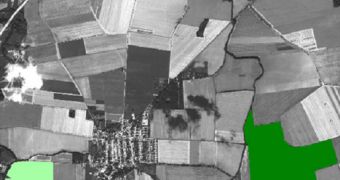According to officials at the European Space Agency (ESA), satellites operated by the vast organization may soon become capable of establishing whether or not crops are organic from Earth's orbit. The move is another step in plan to bring space technology to everyday life.
The benefits of organic agriculture are well known around the globe. It produces healthier food that is less contaminated by harsh chemicals, through sustainable methods of exploiting soils. For this, many appreciate it beyond the cheaper products that regular agriculture provides.
ESA has been trying to help in the struggle of verifying which products are indeed organic for many years, but it was only in recent times that technology evolved by a sufficient margin to make the plan appear possible.
Experts at the agency say that organic and conventional crops have different characteristics when viewed from an external vantage point, largely because they are produced and treated by different standards. These differences may be exploited by satellites to create a detection system.
Organic certification organization Ecocert has been collaborating with ESA on using images captured from Earth's orbit to identify these variations, and derive patterns from them. The data obtained in this manner is then used to support the certification process.
During the most recent trials, five ESA satellites – SPOT-4, Kompsat-2, Landsat-5, Proba and WorldView-2 – were used to scan large fields of winter weather and corn as they grew. The spacecraft snapped multi-spectral and hyper-spectral photos of the targeted areas at regular intervals.
Indicators related to biophysical justification and crop management practices immediately became apparent when studying the data, allowing scientists to identify which producers were indeed using organic techniques, and which were not.
“Accuracy rates of [80 to 100 percent] in discriminating organic from conventional fields are a performance in itself. It seems very promising as far as the potential of future developments is concerned,” Ecocert expert Dr. Pierre Ott explains.
He explains that surveyed indicators included crop spectral reflectance, yield forecasts and spatial heterogeneity, among others. Funds for the work were secured through the ESA Earth Observation Market Development project.

 14 DAY TRIAL //
14 DAY TRIAL //